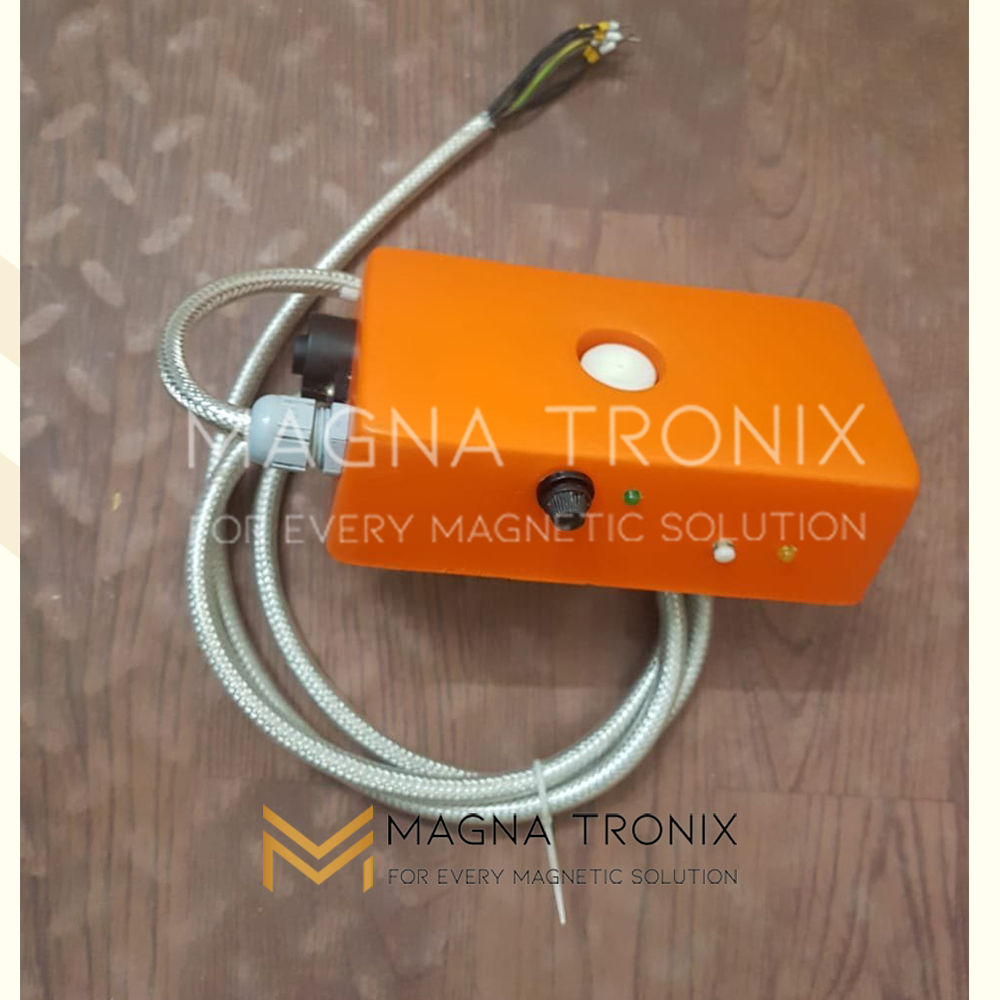Stone Crusher Metal Detector
150000 INR/Piece
Product Details:
- Usage Safety
- Warranty 1 Year
- Product Type stone crusher metal detector
- Application Industrial
- Alarm No
- Waterproof Yes
- Material Mild steel
- Click to View more
X
Stone Crusher Metal Detector Price And Quantity
- 1 Number
- 150000 INR/Piece
- 150000.00 - 175000.00 INR/Piece
Stone Crusher Metal Detector Product Specifications
- Yes
- Mild steel
- Orange
- Safety
- 1 Year
- stone crusher metal detector
- Industrial
- No
Stone Crusher Metal Detector Trade Information
- 1000 Number Per Month
- 10 Days
Product Description
A stone crusher metal detector is a device designed to detect metal objects that might be accidentally introduced into the crushing process of stone or ore. This is important for preventing damage to the crusher and other machinery, as well as avoiding potential safety hazards for personnel.
Heres how a typical stone crusher metal detector works:
1. Detection Mechanism: The metal detector is equipped with a sensing mechanism that can detect the presence of metal. Common types of detectors use electromagnetic or magnetic fields to identify metal objects.
2. Installation: The metal detector is usually installed near the conveyor belt or the feeding hopper of the stone crusher. This is the point where raw materials are introduced into the crushing equipment.
3. Alert System: When the metal detector identifies the presence of metal, it triggers an alert system. The alert can be in the form of an audible alarm, visual signal, or both. This notifies operators or automated systems to take action.
4. Automatic Shutdown: In some cases, the metal detector may be integrated with the crushers control system, enabling an automatic shutdown to prevent damage. This is particularly important to avoid costly repairs and downtime.
5. Adjustable Sensitivity: Metal detectors usually have adjustable sensitivity settings to cater to different types and sizes of metal objects. This ensures that the system can detect both small and large metal contaminants.
6. Material Discrimination: Some advanced metal detectors can discriminate between different types of materials, allowing them to ignore certain non-metallic objects and focus specifically on metal contaminants.
Stone crusher metal detectors serve several important purposes in industries where stone crushers are used. Here are some key uses and benefits of employing metal detectors in stone crushing applications:
1. Equipment Protection: One of the primary purposes of a stone crusher metal detector is to protect the crushing equipment from damage caused by metal contaminants. Metal objects, such as pieces of machinery, bolts, or tools, can inadvertently find their way into the crusher. The metal detector identifies these objects and triggers an alert or automatic shutdown to prevent damage to the crusher and associated equipment.
2. Preventing Downtime: Metal contaminants in the crushing process can lead to unexpected downtime and maintenance issues. By detecting metal objects early in the process, the metal detector helps prevent prolonged interruptions to production, ensuring continuous operation and productivity.
3. Cost Savings: Avoiding damage to the stone crusher and associated equipment through the use of metal detectors can result in cost savings. Repairs and downtime can be expensive, so preventing damage in the first place helps minimize maintenance costs and maximizes the lifespan of the equipment.
4. Product Quality Assurance: Metal detectors contribute to the quality assurance of the crushed stone or ore. Contaminated materials may have negative effects on the final product or downstream processes. By identifying and removing metal contaminants, the metal detector helps maintain product quality and consistency.
5. Safety: Metal detectors enhance workplace safety by reducing the risk of accidents and injuries caused by metal objects entering the crushing equipment. The automatic shutdown feature ensures that operators and maintenance personnel are not exposed to potential hazards associated with metal contamination.
6. Compliance with Regulations: In some industries, there are regulations and standards in place that require the use of metal detectors as a safety and quality control measure. Using stone crusher metal detectors helps businesses comply with these regulations, ensuring that their operations meet industry standards.
7. Environmental Protection: Metal detectors contribute to environmental protection by preventing the release of contaminants into the environment. Metal objects that accidentally enter the crusher can cause damage and may lead to the release of hazardous materials.
FAQs of Stone Crusher Metal Detector:
Q: What is the warranty period for Stone Crusher Metal Detector?
A: The warranty period for Stone Crusher Metal Detector is 1 year.Q: Is Stone Crusher Metal Detector waterproof?
A: Yes, Stone Crusher Metal Detector is waterproof.Q: What is the color of Stone Crusher Metal Detector?
A: The color of Stone Crusher Metal Detector is orange.Q: What is the usage of Stone Crusher Metal Detector?
A: The usage of Stone Crusher Metal Detector is for safety.Q: What is the application of Stone Crusher Metal Detector?
A: The application of Stone Crusher Metal Detector is in the industrial sector.Tell us about your requirement

Price:
Quantity
Select Unit
- 50
- 100
- 200
- 250
- 500
- 1000+
Additional detail
Mobile number
Email
















